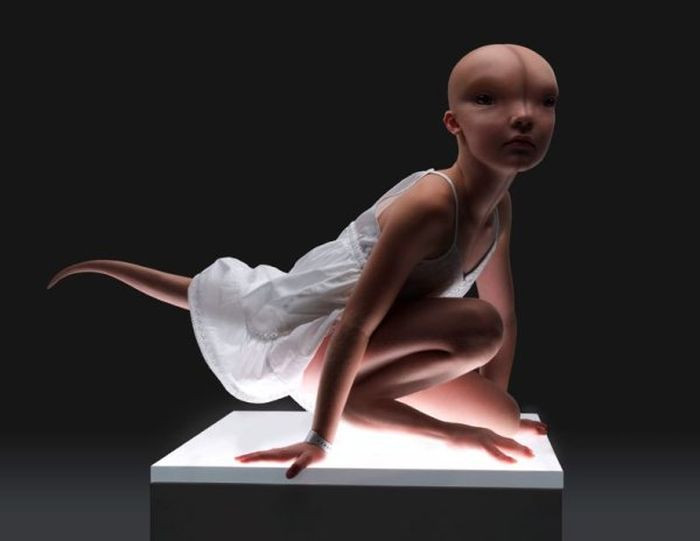Can I create hybrid animals?
Modern science has been able to create human-animal embryos, and a hybrid biology project like in Greek mythology is being carefully considered.
In Greek mythology, Chimera is a monster that crosses between lions, goats and snakes. They do not exist in reality, but mixing and hybridizing organisms is an idea that can become a reality. This is worrying moralists.

Greek beasts hybrid in mythology.
Last week, the National Institutes of Health (NIH) proposed a new policy that would allow scientists to create Chimera. By genetic engineering, Chimera can form when human stem cells combine with the cells of other animals and develop into hybrid animals .
Earlier in September, the NIH suspended funding for these types of research to morally consider the creation of animals that could carry human parts. Supporters argue that research can help scientists better understand people's diseases and find new ways to cure them.
To get a better understanding of all these ethical issues, All Things Considered host Ray Suarez spoke to Insoo Hyun, a professor of bioethics and philosophy at Case Western Reserve University.
Currently, the law only allows the transfer of stem cells from human embryos into animals (except for primates) for 14 days, and this type of study will be closely considered.

Shaping a hybrid animal.
Reason for worry
Much of the concern is about animal protection. We do not know exactly how these experiments will cause animals to suffer. There is another greater concern about the degree of mixing between humans - animals that can lead to deformed animals. Humane is something that can't be played and good and bad boundaries are fragile, no matter how big their research value is.
Hyun personally supports breeding studies, but there must be some specific conditions, that is when it is of scientific value and there is no other way to perform experiments beyond this particular approach. So Hyun suggested that it should be based on each case and should be taken seriously, especially when there are public observations.

In this photo, a professor is holding a stem cell tray at the University of Connecticut.
Recent discoveries
Recently, researchers have inserted human glial cells - part of brain cells - into mice. They found that these mice could find their way out of the labyrinth twice as often as normal mice and have double memory.
This has garnered attention in the last few years, and may be a precursor to the biggest concerns when going further with more high-level animals than rodents. .
About the idea of creating something that doesn't exist in nature

Describe how to mix cells of 2 different species.
Huyn thinks this is a major public concern. Many people believe that there will be many unpredictable consequences when creating a completely new creature. This is a very reasonable worry. Whenever there is an innovation, people often worry about its application. Since then, Hyun thinks that this study needs to be closely monitored institutionally by supervisory committees. They would never allow a Chimera to leave the laboratory and wander the streets.
How does the review board outline the limits?
According to Hyun, the Review Board should have a track record and a history to monitor both human and animal embryos research, and then point out the most appropriate approach. That will be the beginning of chimera research.
- Strange hybrid animals
- Excellent hybrid children
- Strange creatures are crossed from zebras and donkeys
- The ugliest hybrid animals on Earth
- Use sexual hybrid methods to create new orchid varieties
- Discover new hybrid creatures between dolphins and whales
- What is a hybrid car? How do they work?
- Hybrid between male zebras and rare female donkeys
- Scientists are creating hybrid animals between humans and monkeys in China
- Strange reptiles look like worms, snakes and turtles
- Special types of hybrid fruits
- He secretly crossed human embryos with animals
 'Fine laughs' - Scary and painful torture in ancient times
'Fine laughs' - Scary and painful torture in ancient times The sequence of numbers 142857 of the Egyptian pyramids is known as the strangest number in the world - Why?
The sequence of numbers 142857 of the Egyptian pyramids is known as the strangest number in the world - Why? History of the iron
History of the iron What is alum?
What is alum?